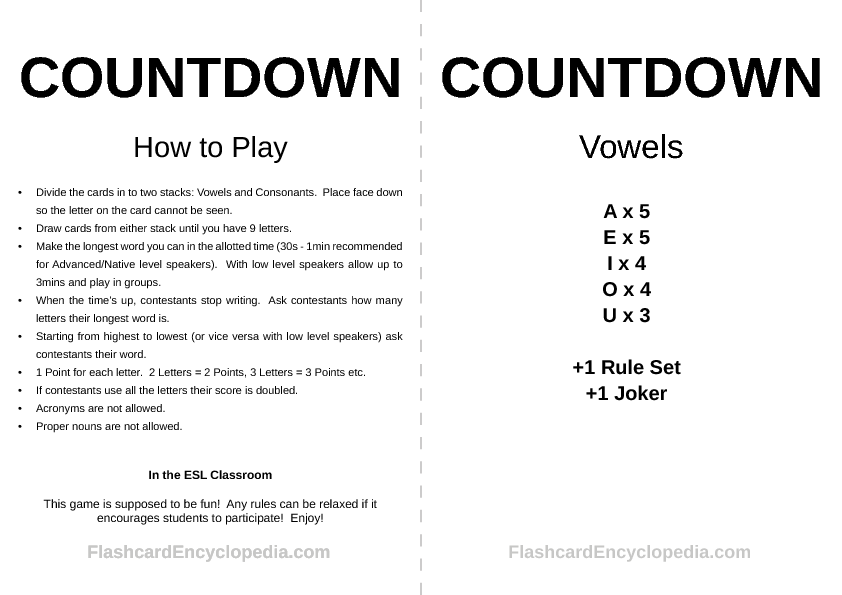There are 51 cards, all you need to do is cut them in half along the dotted line. Included is a guide on how to play, a list of the letters included and some jokers in case you lose some letters and need to replace them. I introduce this by writing an A on the board and eliciting B, C etc but I draw a line between A and B and write the letters on the correct side. So A on one side B, C, D on the other. Then I ask where E should go. etc. Elicit the vowel and consonant if possible. I teach in Korea so I use this as an opportunity to practice the ‘V’ sound – Korean doesn’t have a V sound and if you ask a lot of Korean school children to pronounce that letter they’ll say ‘Bwee’ for some reason. So I emphasise that it’s Vowel not Bowel and I usually draw a little anatomical torso with intestines marked in to show what bowels are. It usually gets a laugh. And then you go straight in to it – repeatedly ask them for either a consonant or a vowel until you have 9 letters and explain that they need to make the longest word they can from the selected cards – you can illustrate like I have on my blog if you are unsure. Students are then given an allotted amount of time to create as many words as possible. Points are then awarded depending on the number of letters in their longest word (e.g. 5 letters = 5 points, 3 letters = 3 points). Divide the students into groups or if they’re a high level they can play individually. I give each group a piece of paper so they can experiment. Play and have fun. Try to beat your students.
